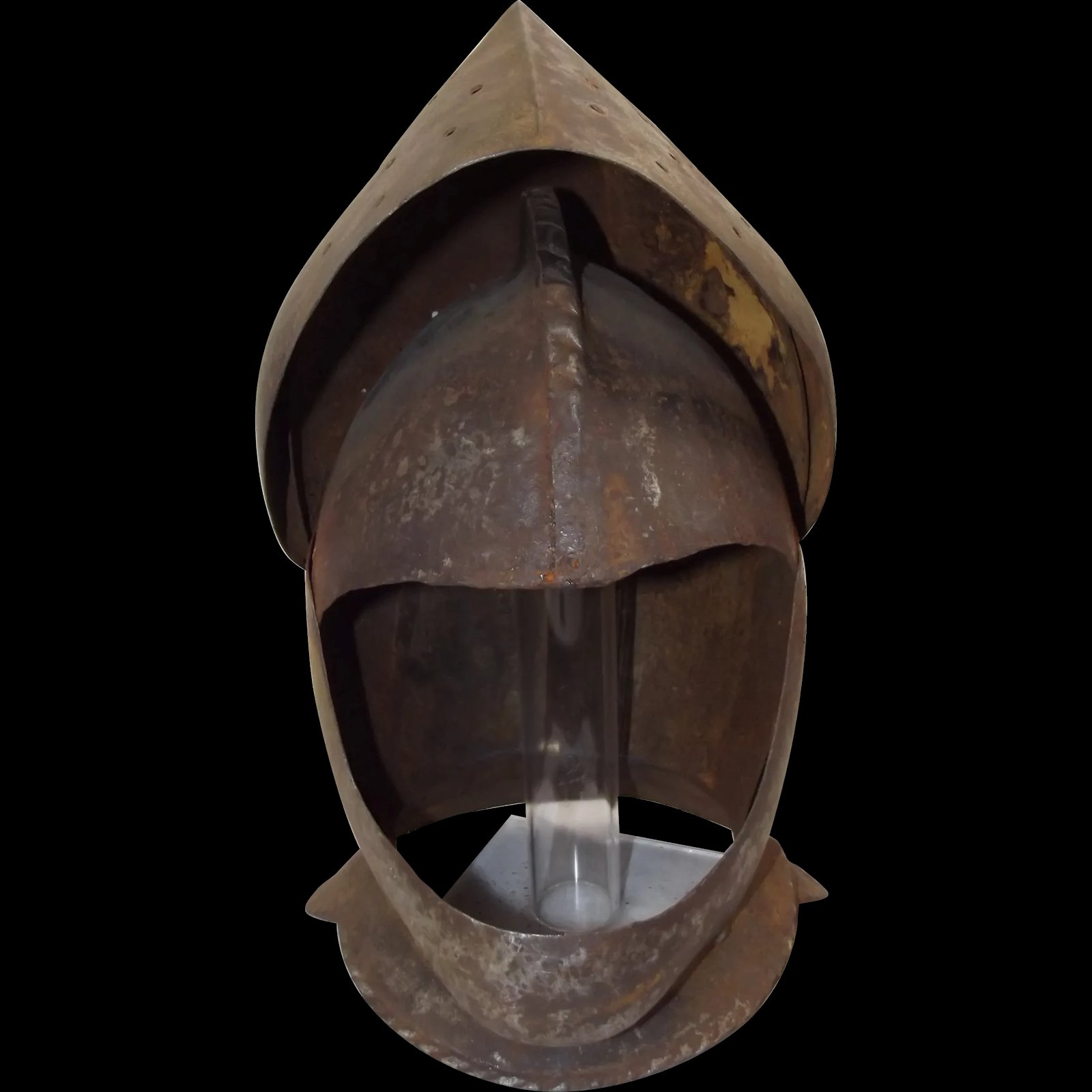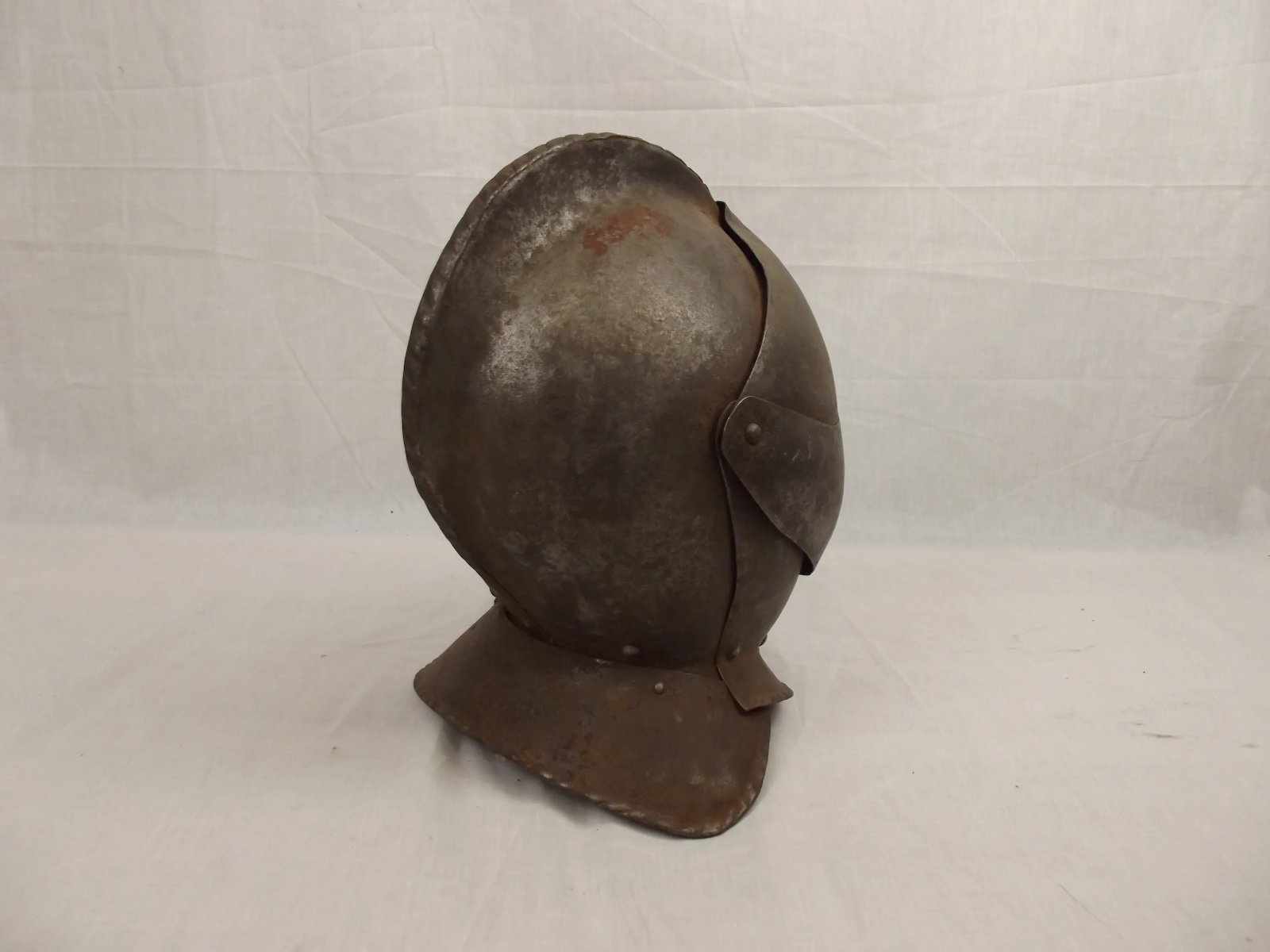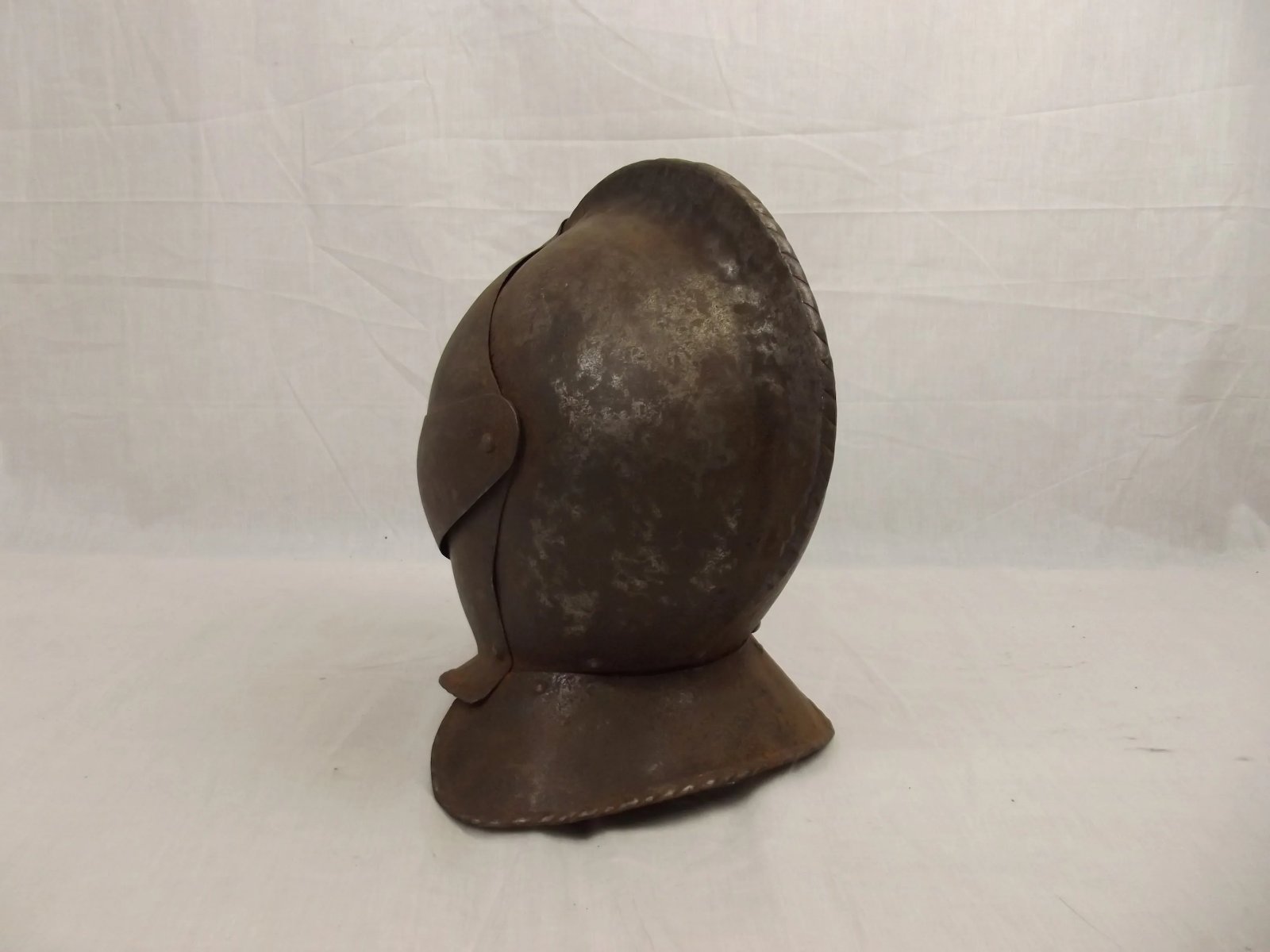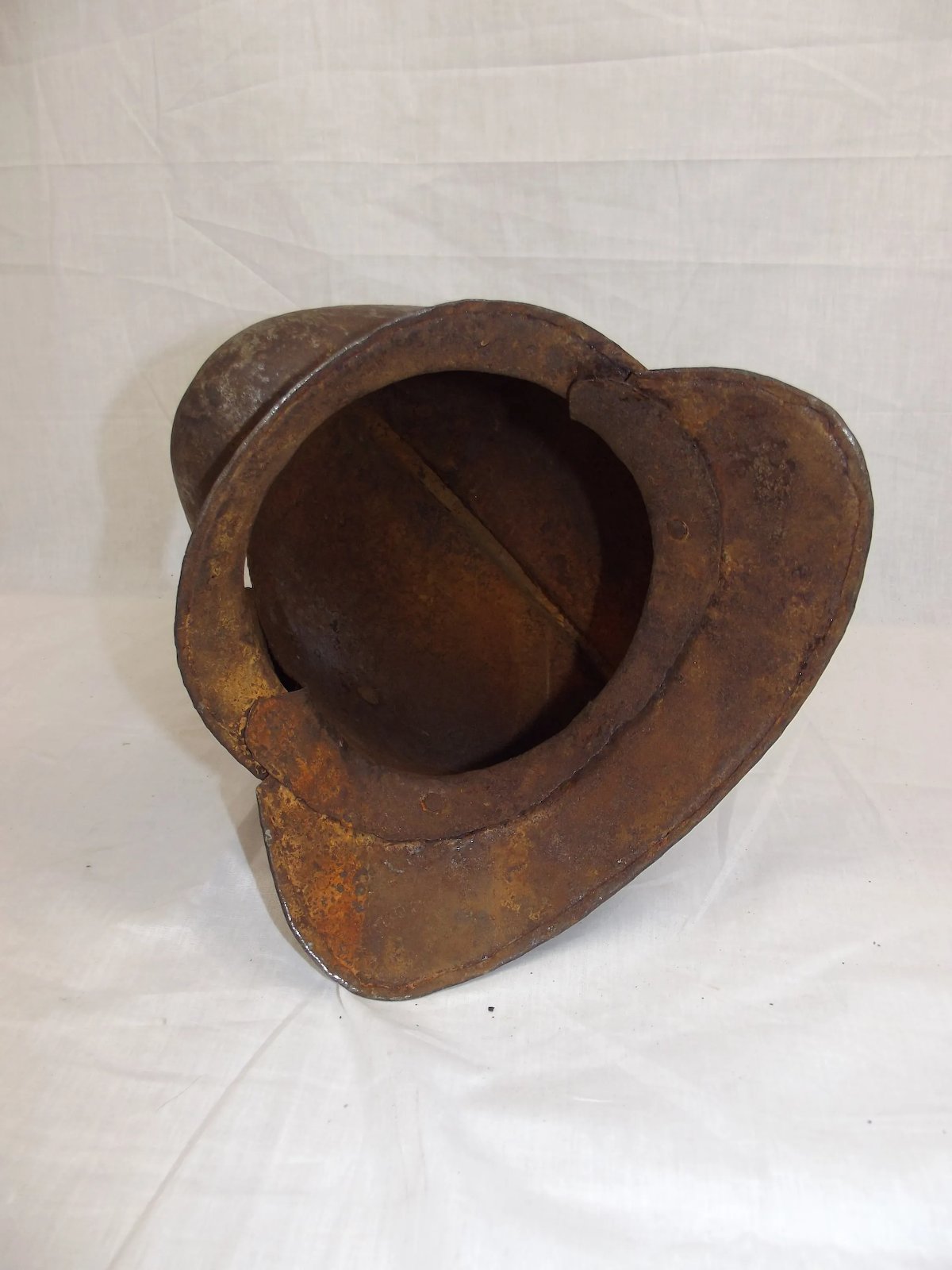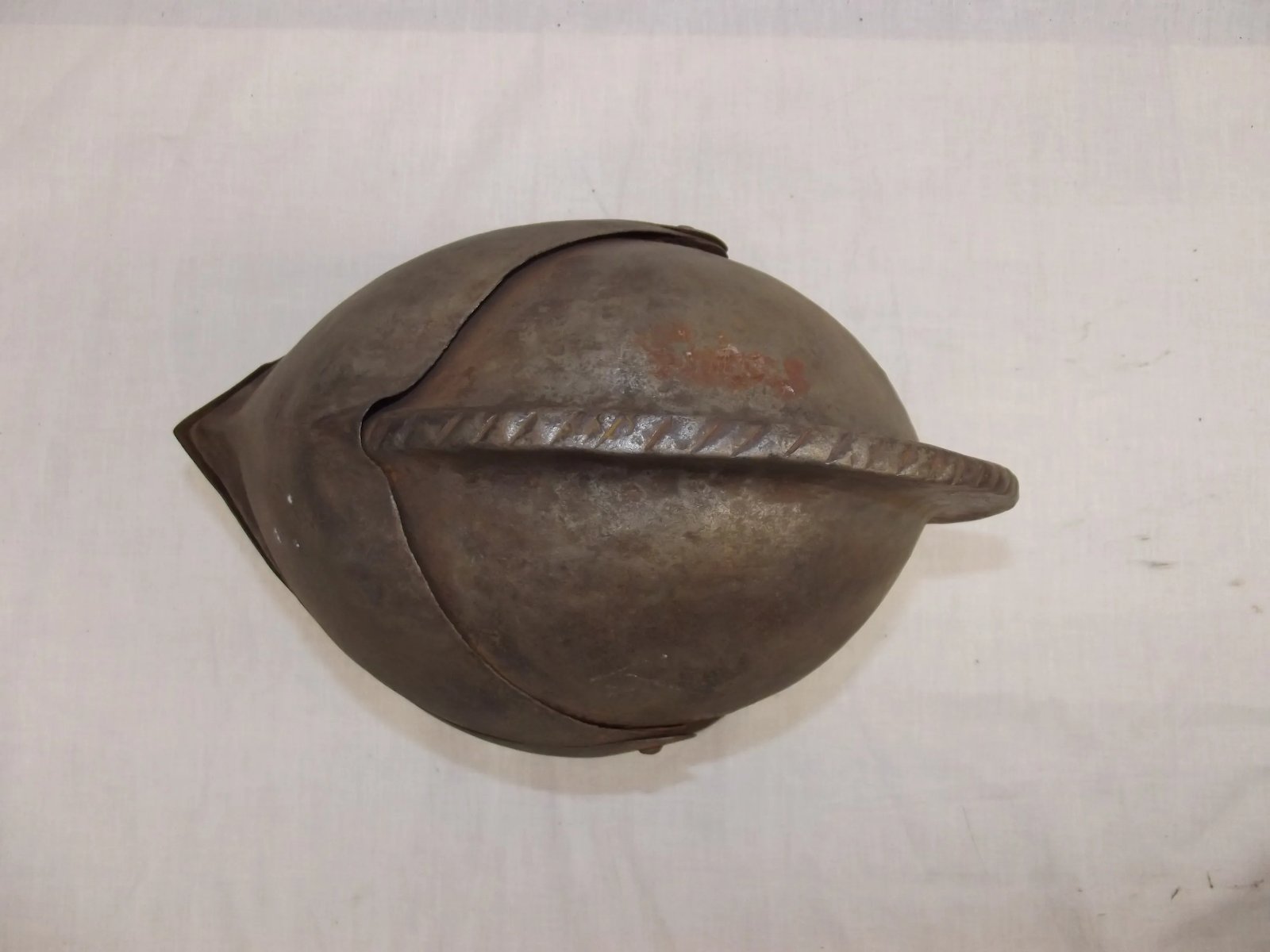~ Circa 1580 Continental Probably German Burgonet Helmet ~
A great example of a sixteenth century burgonet helmet with combed crest, ribbed lower ridge and perforated falling buffe. The skull is of two piece construction with a riveted on neck guard.
~ Burgonet History ~
The burgonet helmet (sometimes called a burgundian sallet) was a Renaissance-era and early modern combat helmet. It was the successor of the sallet. Commonplace throughout Europe, it first came into use early in the 16th century and had attained its classic form by c. 1550. Accompanied by plate armour, burgonets were mostly worn by cavalry: cuirassiers, demi-lancers and hussars.
The burgonet helmet is characterised by a skull with a large fixed or hinged peak projecting above the face-opening, and usually an integral, keel-like, crest or comb running from front to rear. Attached to the skull are substantial hinged cheekpieces which usually do not meet at the chin or throat. A flange projects from the lower parts of the skull and cheekpieces to protect the back and sides of the neck. Though typically a relatively light helmet and open faced, a falling buffe, a sort of visor that was closed by being drawn up rather than down, was sometimes used. Some helmets, often termed “close burgonets”, were made which took elements, such as the peak, crest and falling buffe, of the burgonet and combined them with the hinged bevor of the close helmet.
~ Condition ~
The helmet has light surface corrosion as per its age. The visor (the falling buffe) moves sweetly. The rivets are original and complete. The skull is free from dents, dings and cracks.
~ Dimensions ~
The helmet stands at 33 cm (13 inches) tall, the same from front to back and it is 27 cm (10.5 inches) wide.
It weighs 1.78 Kg.
#9325


